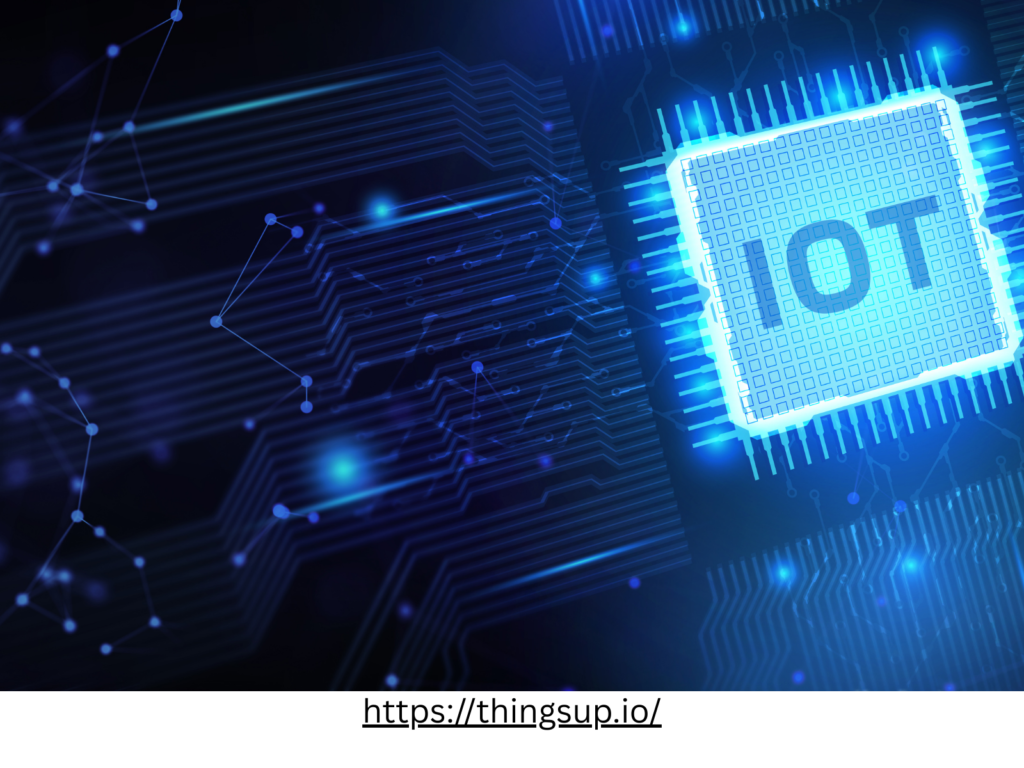The global energy industry faces an industrial revolution because digital technologies now play the leading role in its evolution. The Internet of Things (IoT) leads the global energy industry revolution through its reform of energy generation distribution and consumption methods. Telecommunications systems along with intelligent automation and smart sensors enable energy providers as well as consumers to operate better through sustainable practices that deliver efficiency and cost-effectiveness.
This piece examines the substantial IoT technology impact on energy operations while demonstrating the essential function of IoT platforms combined with the formation of an IoT-based energy management system which furthers smart energy development.
What Is IoT in the Energy Sector?
Internet of Things represents an interconnected system of objects which transfers data through the internet connection. Smart meters along with temperature and pressure sensors operate alongside connected transformers and distributed energy resources (DERs) which include solar panels and wind turbines in the energy sector. The IoT devices operate in real-time to gather information which gets transmitted to central IoT processing stations for analytical operations.
The combination of monitored systems through IoT provides automatic energy management. It delivers optimized operations alongside safer procedures with sustainability benefits.
Key Areas Where IoT Impacts the Energy Industry
Real-Time Monitoring and Predictive Maintenance
Utillities gain advance warning about equipment failures through predictive analytics systems operated by IoT platforms. Real-time monitoring through IoT technology helps increase operational time while prolonging infrastructure service duration. The combination of predictive maintenance techniques leads to both lower expenditures and superior system dependability. It creates beneficial outcomes for maintenance providers together with their consumers.
Smart Grids and Load Balancing
The introduction of Internet of Things technology into the power grid led to the development of smart grids that automatically regulate power supply and power consumption. Smart meter technology and network sensors send live data from multiple portions of the power grid to utility operators who can detect operational problems as they happen.
Through IoT platforms users receive processed information to enable automatic demand response sessions which provide incentives for energy consumption reduction during times of peak usage. The integrated system helps prevent power outages, strengthens power grid reliability while optimizing the usage of renewable power generation.
Enhanced Energy Efficiency Through Energy Management Systems
Organizations and homes can access detailed energy usage information through Internet of Things powered energy management systems. IoT devices collect data which helps these systems find and present usable efficiency recommendations.
An Energy Management System installed in commercial facilities tracks HVAC equipment usage as well as lighting systems and machinery activities to optimize energy consumption based on building occupancy and daily time cycles. Through IoT technology organizations can gain better operational control together with reduced waste and better sustainable performance achievement.
Integration of Renewable Energy Sources
The IoT system serves as an essential tool to handle distributed energy resources (DERs) that consist of solar panels together with wind turbines and battery storage solutions. Real-time oversight and control capabilities become essential because these decentralized variable sources cannot be directly managed.
Through IoT platforms distributed energy resources join the larger energy system through their ability to group data from numerous generation points. The IoT system enables operators to predict electricity generation levels and distribute stored power effectively when controlling system loads. The system enables net electrical metering procedures and peer-to-peer energy marketplace mechanisms.
Benefits of IoT in the Energy Industry
- Operational Efficiency: With continuous monitoring and automation, companies can optimize processes and reduce energy losses.
- Cost Savings: Predictive maintenance and optimized energy use lower operational and maintenance costs.
- Sustainability: IoT enables better integration of renewable energy and reduces carbon footprints.
- Improved Reliability: Early detection of faults and dynamic grid management ensure fewer outages and greater reliability.
- Data-Driven Decision-Making: IoT platforms provide deep insights that aid strategic planning and policy compliance.
Challenges and Considerations
While the benefits are numerous, adopting IoT in the energy sector does come with challenges:
- Data Security and Privacy: A vast network of connected devices increases the attack surface for cyber threats.
- Integration with Legacy Systems: Many utilities still operate on outdated infrastructure that may not support modern IoT devices.
- Interoperability: Ensuring that devices from different manufacturers work seamlessly together can be complex.
- High Initial Investment: The upfront cost of deploying IoT infrastructure can be significant, although ROI tends to be strong over time.
The Role of an IoT Platform in Energy Transformation
An IoT platform is the backbone of any smart energy initiative. It serves as the central hub where data from various IoT devices is collected, stored, analyzed, and visualized. Key features of a good IoT platform for energy applications include:
- Scalability: To handle thousands of devices and sensors.
- Real-Time Analytics: For instant decision-making and control.
- Integration Support: To connect with EMS, SCADA systems, and third-party applications.
- Security Features: To protect sensitive data and prevent breaches.
- Custom Dashboards: To present relevant data in a user-friendly manner.
By leveraging a powerful IoT platform, energy companies can accelerate digital transformation and unlock new business models.
Real-World Use Cases
- Smart Cities: Cities like Amsterdam and Barcelona use IoT-based energy systems to monitor street lighting, optimize traffic lights, and manage electric vehicle (EV) charging stations efficiently.
- Industrial IoT (IIoT): Manufacturing plants use energy monitoring systems to track machine energy usage, optimize shift operations, and reduce power bills.
- Renewable Energy Farms: Wind and solar farms rely on IoT to monitor weather conditions, optimize panel orientation, and manage storage systems for efficient output.
Final Thoughts
The energy industry is on the cusp of a smart revolution, with IoT at the core of its transformation. By embracing IoT platforms and integrating them into energy management system, companies and consumers alike can make more informed, efficient, and sustainable energy decisions.
As the demand for cleaner and more reliable energy grows, IoT will continue to be a game-changer—bringing intelligence to infrastructure, empowering renewable energy adoption, and shaping the future of the global energy ecosystem.
Read more: https://postingblog.com/ways-to-optimize-your-digital-marketing/

